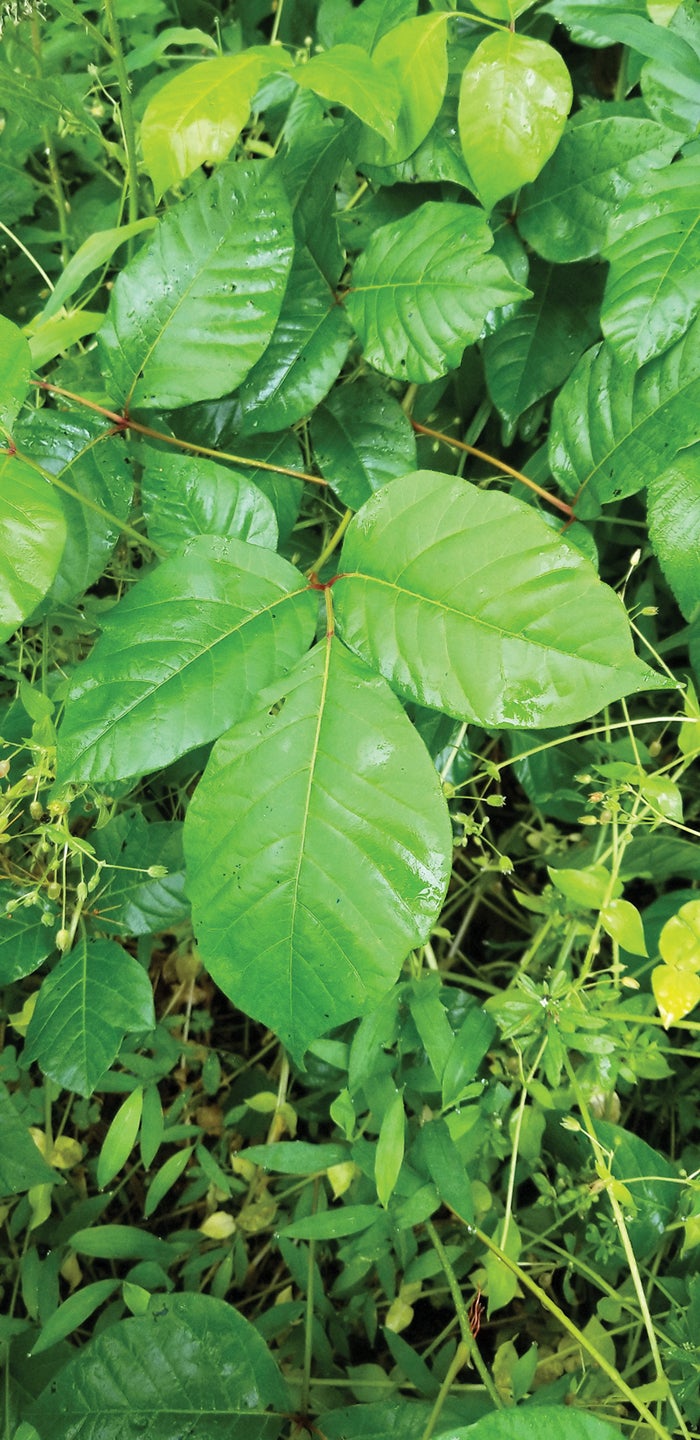Beware of poison oak and poison ivy
Published 12:00 am Friday, May 18, 2018

- Submitted photo 'Leaves of three, let it be.' Poison oak in the landscape.
Our neighbors have already asked about poison oak. Seems like the rainy weather has spurred growth of this noxious weed.
Both poison oak and ivy contain powerful compounds that produce a painful rash, in some instances severe enough to hospitalize those who have extreme allergies. Identification and control of poison ivy is one step in prevention of dermatitis.
Poison ivy is usually found as undergrowth in woods, fence rows, recently cleared lots or growing as a vine on trees. Poison oak is in the same family but usually found in the western United States.
Poison ivy can also grow as a low-growing shrub. The stems of poison ivy are smooth with a light brown to gray color.
Poison ivy is an attractive vine with dark green, shiny leaves with broad serrated leaf margins. The leaves are trifoliate, or in groups of threes, producing gray-white berries 1/4 inch in diameter. The berries are a favorite food of birds, therefore the plant is found almost everywhere. Underground stems or rhizomes is another method of reproduction.
The poisonous substance that causes skin rash found in the leaves and stems is called urushiol. The poisonous substance is also found in all parts of the plant: roots, bark, berries and stems. Urushiol is an oily substance that does not dissolve in water and is not volatile. Physical contact is necessary to obtain the poisonous oil and cause a skin rash.
Susceptibility of dermatitis depends upon the individual, but sensitivity can change. Those who are not affected at one time may be affected later.
Minute amounts of the oil can cause a rash penetrating skin tissues just 10 minutes after contact and may take 10 days before symptoms appear.
Once you get the rash, you can’t spread it around by scratching. The reason most think this spreads the rash is because of secondary infection. The rash appears soon after contact in some spots and it may take a couple of days in other spots. This gives the illusion that you’ve spread the rash by scratching.
Contact with the oil may occur indirectly via smoke, pets, clothing, garden tools, golf clubs, guns or fishing rods. Splashing sap from stems and twigs when cutting trees is often a source during the winter months while cutting firewood.
Research has proven that the oil can remain active for months on objects. Dead plants can still cause allergic reactions for a couple of years.
Shower with warm water and plenty of soap when working or playing near heavy infestations of poison ivy. It is important to bathe immediately after contact. Avoid using complexion soaps that contain oils. These types of soaps may actually spread the poisonous oil.
Now is an excellent time to control poison ivy. The best time to control poison ivy is in late spring or early summer before the plant blooms. Brush killers or herbicides containing dicamba or trichlopyr should be sprayed to runoff to effectively control poison ivy.
Herbicides that contain glyphosate (Roundup) also kill the vine, systemically destroying underground rhizomes. Wear long-sleeved shirts, long pants and protective gloves (plastic disposable gloves are ideal) when working in patches of poison ivy. Follow instructions provided by the label before application of any pesticide.




